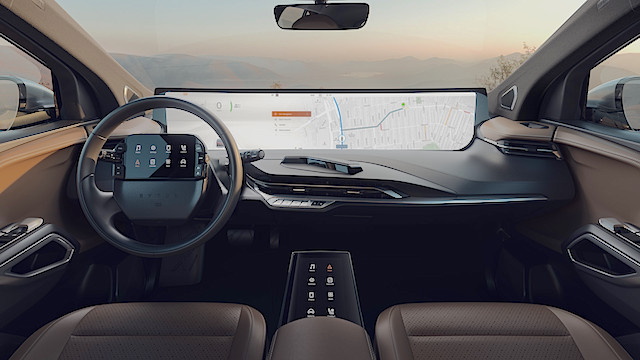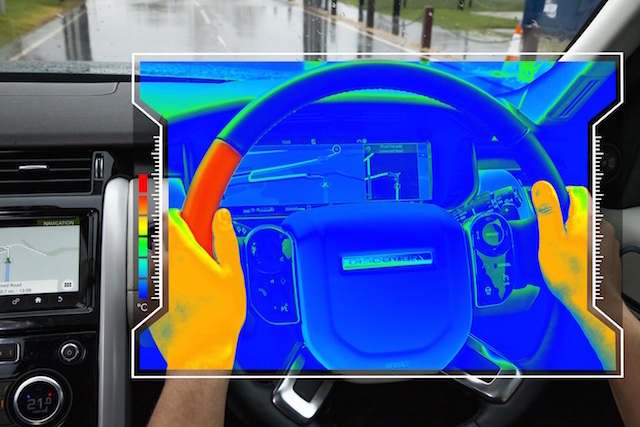
Where is the automotive industry going next with the development of so-called smart devices? Is it nearing information overload? Findings solutions to problems that don’t exist?
Take, for example, inventions from American start-up Byton and Britain’s venerable Jaguar Land Rover (JLR). Byton not long ago revealed its production-ready vehicle the ‘M-Byte,’ notable for the huge dashboard screen (above and below) it calls the ‘Shared Experience Display.’
Now, Jaguar Land Rover has come up with the ‘sensory steering wheel,’ a helm developed with Glasgow University that literally blows hot and cold. It uses ‘thermal cues’ to tell drivers when to turn left or right. Really? More on JLR’s future steering wheel below.
Byton’s M-Byte quickly grabbed media attention in the USA, not for design or performance, but for its 1.2m curved screen – the width of seven Apple iPads laid end to end.
And if the big screen doesn’t provide enough information, there are more screens in the M-Byte sedan and SUV (both cars above) – an 18cm layout in the hub of the steering wheel, a 20cm one between the seats, and a couple of others in the rear.
Distractions? Not according to Byton. It says the main display is a natural evolution of semi-autonomous systems that already respond to gestures and voice commands, only it provides, along other things, many different platforms for smartphone connectivity.
The JLR creation is the result of studies that show thermal cues (pictures above and below) could be a way of keeping drivers fully focused, to reduce the amount of time they have to take their eyes off the road.
“Research has shown people readily understand the heating and cooling dynamics to denote directions,” said Alexandros Mouzakitis, JLR electrical research manager.
“The subtlety of temperature change can be perfect for certain feedback that doesn’t require a more intrusive audio or vibration-based cue.”
The cues rapidly warm or cool by up to 60deg C. areas on both sides of the steering wheel to warn drivers where to turn, when to change lanes or to warn of an approaching junction.
“This could be particularly useful when visibility is reduced through poor weather or the layout of the road,” says JLR.
But if the steering wheel gets too hot to handle, it adds, “the driver could adjust the temperature.”




